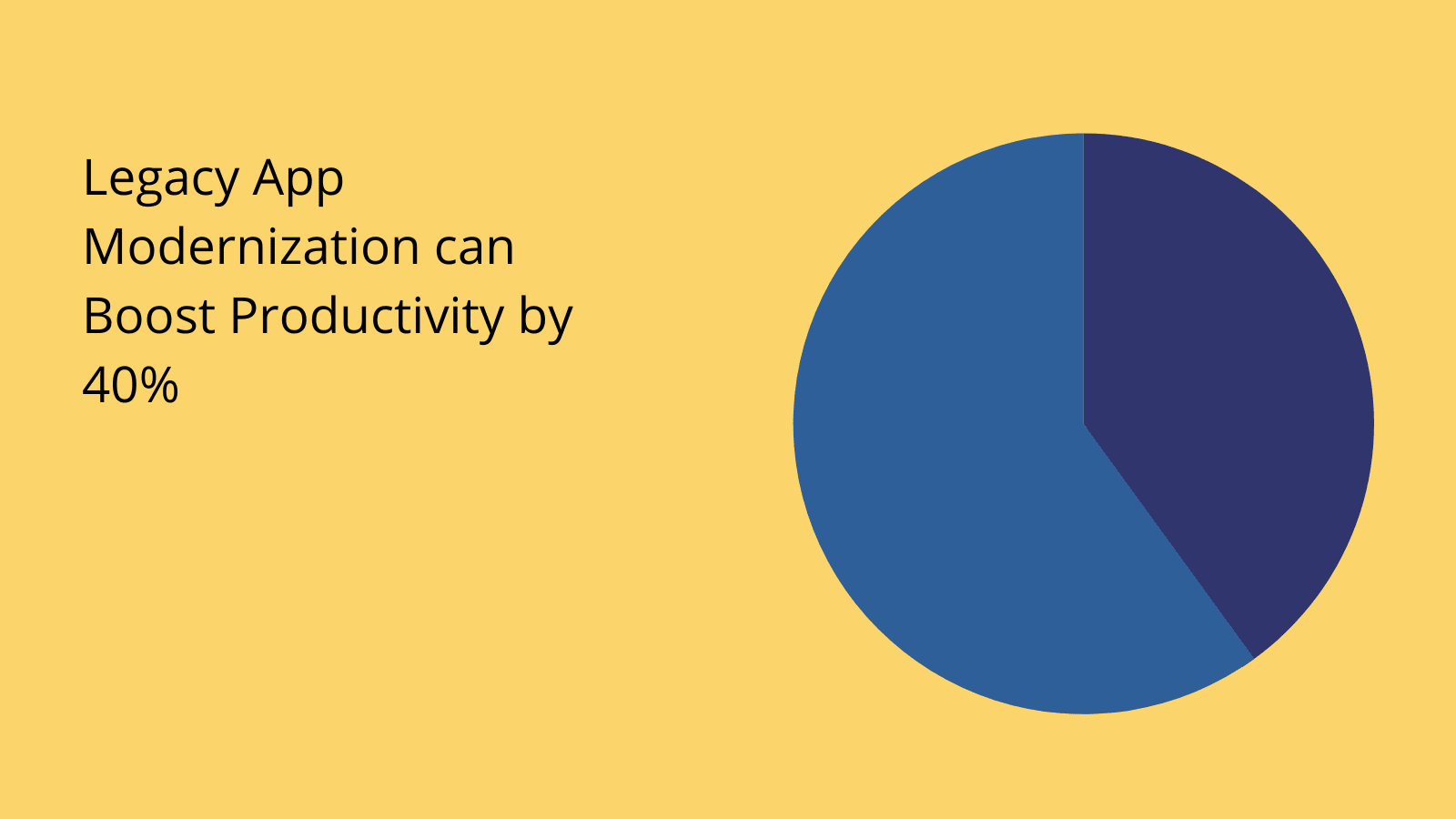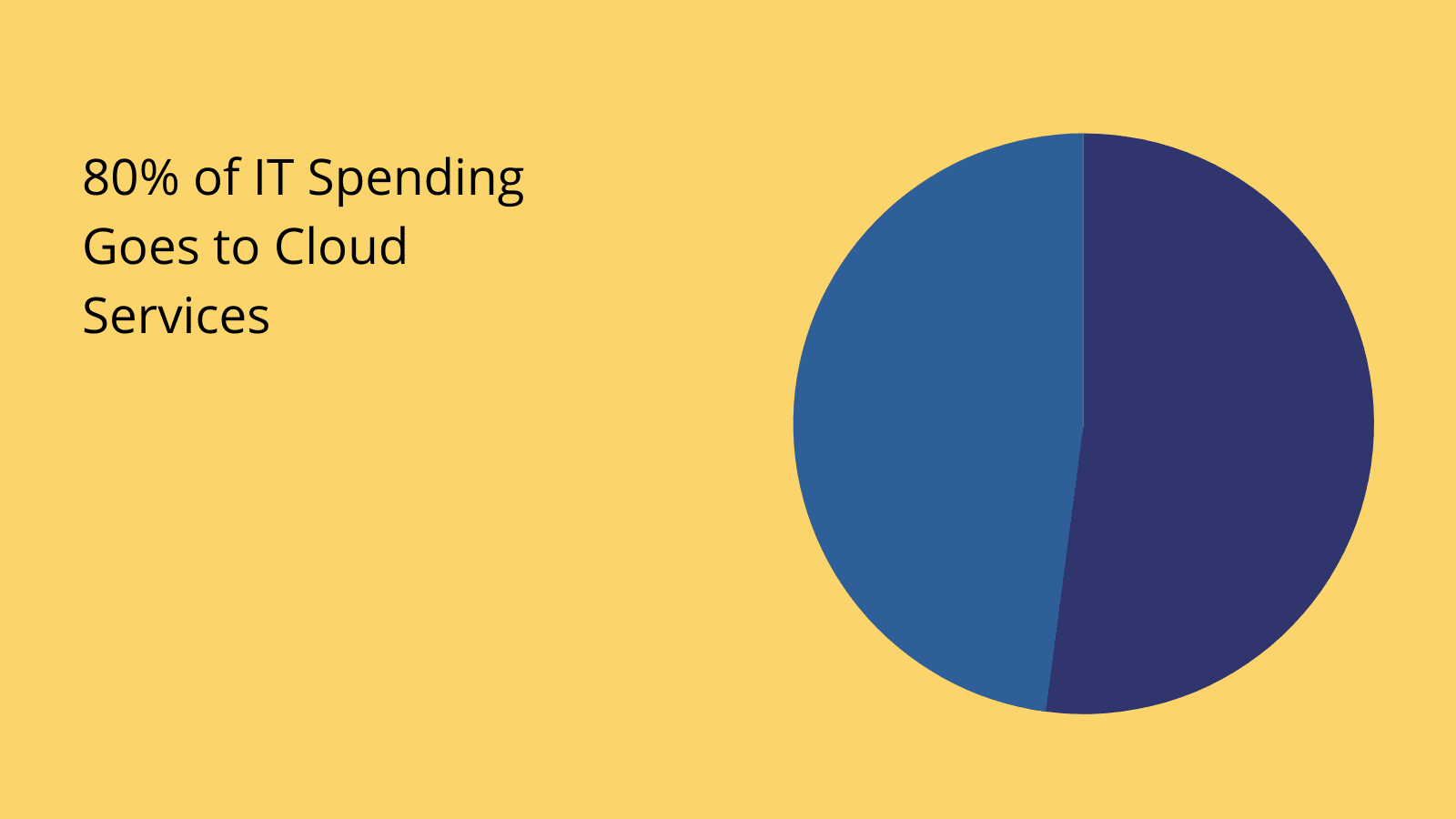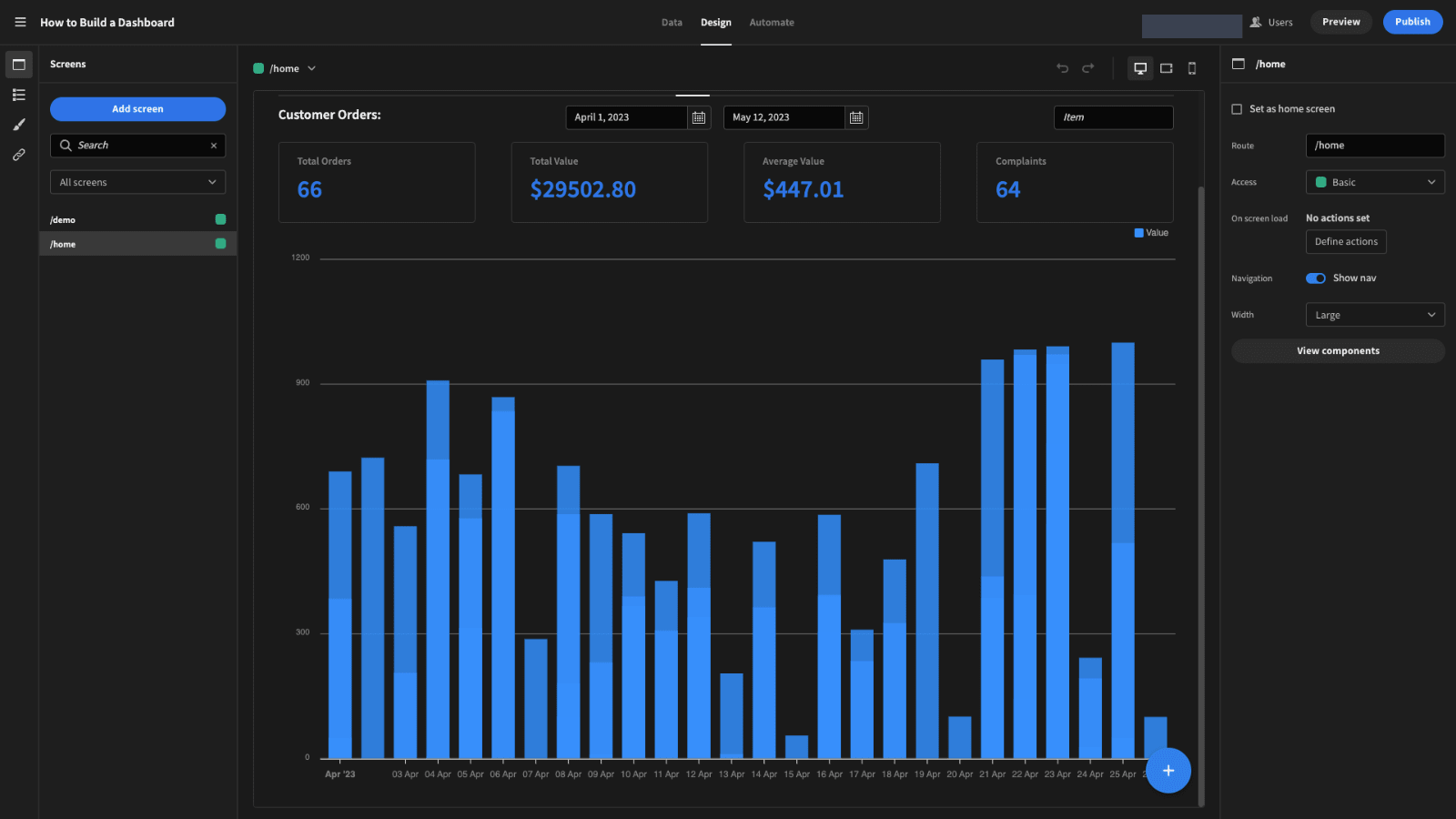Application Transformation | 4 Strategies
Application transformation is one of the most ubiquitous tasks for IT teams in large organizations. The unfortunate reality for many enterprises is that old, outdated software makes up a huge proportion of their internal tool base.
This creates a huge number of technical and operational challenges.
Chief among these is the fact that your internal processes are based around tools that aren’t up to modern standards. In turn, this hampers your processes’ efficiency, security, productivity, accuracy, and ultimately profitability.
Application transformation is a key element of how we overcome this.
Today, we’re going to dive into everything you need to know. We’ll check out some of the key situations where you’ll need application transformation, what it achieves, the kinds of apps we’ll target, and the specific strategies you can leverage.
We’ll also see how Budibase is making it easier than ever before to create sleek, professional web apps for managing all sorts of internal workflows.
Before we get to any of that though, let’s start with the basics.
What is application transformation?
Application transformation is the process of modernizing or replacing legacy platforms to bring them into line with modern business requirements. We’ll see a little bit later that this can take a number of forms in practice.
However, at the minute, the main thing to understand is that application transformation is all about ensuring that old or suboptimal technology doesn’t hold our team back.
Let’s think about the alternative - sticking with what are known as legacy applications. Many companies carry on using tools that are no longer fit for purpose because of a perception that the cost of replacing, refactoring, or retiring them might be too high.
This could be because of several factors, like employee preferences, additional training needs, or simply the risk of service disruption.
For example, many airlines and other large, public-facing organizations use truly ancient IT systems because replacing these without creating all kinds of problems just seems too difficult.
To understand this better, let’s think about what exactly we mean when we talk about legacy apps in the context of application transformation.
What are legacy applications?
Legacy apps are any tools that are outdated or obsolete, even if they’re still technically functional. So, these might be based on dated technology, or they might have failed to keep up with your changing business needs.
Of course, there are countless potential permutations of this.
However, there are a few key scenarios that we need to be aware of. These include a lack of cloud support, a lack of integrability with other platforms, and sub-optimal, unintuitive user interfaces.

(IR )
Or, the problem can be more fundamental - say, the application in question is written in a language that none of your team knows how to support anymore.
So, the core characteristic of a legacy application is that at some point in the past, they were fit for purpose but now they aren’t - although they’re still in use despite this.
As such the goal of application transformation is to ensure that our software stack keeps up with the needs of your business as they evolve and grow over time.
What does application transformation achieve?
But why? That is, what specifically do we need to transform with respect to our applications in order to sure up their usefulness?
And what practical business benefits does application transformation lead to?
We can attack this from a few different angles.
One is thinking about the specific areas where legacy tools can fail to deliver for your business, and then linking these to the kinds of improvement we could make through transformation.
So, basic business-level issues like efficiency, security, and productivity can all be hampered by retaining legacy tools - because of their UIs, core functionality, or the back-end security tools they can support.
Or, we can think about things the other way around. That is, starting from what we’d like our app to be capable of and working backward to the business implications. Cloud transformation is the best example of this by far.
For instance, cloud-based tools can offer us a range of business-level advantages, including enhanced security and compliance, lower upfront costs, and improved accessibility - especially for remote teams.
You might also like our guide on how to create forms for SQL databases .
What are the signs that we need application transformation?
So how can we tell when it’s time for application transformation? Of course, sometimes this could be fairly self-evident. In other cases, the impact of our legacy applications might be less obvious.
At least, we might know that there’s a problem but fail to attribute this to date technology.
What signs should we be on the lookout for?
Consider that the detrimental effects of legacy apps might only be apparent in the context of how newer tools could perform better. For example, if we can’t implement some process change because of a lack of functionality.
Alternatively, another obvious sign of a need for transformation is if we’re struggling to keep pace with competitors - either in terms of their actual product or the quality of their service.
Or, things could be even more deeply hidden. Say, if your employees’ productivity was just subpar. We wouldn’t have a counterfactual here to indicate that there’s something wrong. So, we need to intuit this with existing knowledge of our platforms.
Finally, there’s the issue of technical debt. In very basic terms, this is the amount of development work you’re putting off until the future by retaining legacy systems. So, the longer you wait, the more complex it will be to replace or refactor tools.
4 application transformation strategies
We can actually go about application transformation in a few distinct ways. Indeed, we can point to four distinct strategies that you might choose to leverage, depending on your specific applications, needs, and resources.
Let’s check out each one in turn.
Rehost
Rehosting an application is also sometimes referred to as the lift and shift option. As the name suggests, the idea here is to move the application in its unaltered form to a new host - usually in the cloud.
This may allow us to implement new features - largely around security, authentication, and access - without the need to modify our existing code base.
This is often the fastest and easiest strategy for transforming applications, but depending on the code base of the app in question - as well as our particular needs - it isn’t always possible. So, we need to know the other strategies too.

(CloudZero )
Refactor
Refactoring an application means substantially altering the codebase, without modifying its underlying structure. For example, we might alter individual modules, without making any changes to how these interact with the rest of the application.
For example, modernizing a UI or adding new functionality within our existing code base.
Refactoring gives us much more flexibility within the context of application transformation than refactoring. However, it also requires considerably more work in a lot of cases. So the calculation here is whether refactoring is a more viable option than outright replacement.
Replatform
Replatforming is kind of an intermediary option between refactoring and rehosting. Basically, this means minimally altering specific elements of an application to allow it to operate in a new environment.
Minimally is the operative word here.
The classic example of this is altering an application’s data layer. For instance, modifying or even entirely replacing the backend database.
Rebuild
And finally, we have wholesale rebuilds. Obviously, this is the most labor-intensive and expensive option - at least traditionally. As you can probably guess, the idea here is to start completely fresh and build a replacement tool.
The upside is that - within the boundaries of what you have the technical capacity for - you can build whatever you want.
However, remember earlier that we said many businesses put off application transformation out of fear of excessive costs and disruption.

(McKinsey )
Create a transformation plan in 5 steps
Now, let’s think about how we can put what we’ve learned so far into practice.
Specifically, we want to walk through the exact process you can follow to go from planning to implementing our application transformation project - and ultimately measuring its success.
With that in mind, here’s our five-step framework for application transformation.
1. Choose applications and set goals
As with any other kind of transformation project, it’s vital that we start by outlining exactly what we want to achieve.
First up, we need to decide what our target application is. For your first project, there are a few options here. On the one hand, we might choose something relatively simple - or we might want to go after the platform where we stand to gain the most.
In either case, the more important step is figuring out what we want to achieve by transforming our chosen application.
This requires us to establish specific, measurable goals. In the case of application transformation, there are two jumping-off points we can use here:
- Outwardly technical goals - like adding new functionality within a process.
- Financial goals - Cutting the costs or time incursion associated with completing a particular task.
Of course, there’s a large degree of overlap between these.
For instance, there’s almost inevitably a financial justification for enacting any given technical change - or at least, there ought to be.
To see this in context, take a look at our guide to finance transformation .
2. Define transformation requirements
Once we know what we want to achieve, we need to think about how we’re going to do it. This means drawing up requirements for our application transformation project.
Specifically, we need to outline our:
- Functional requirements - The actual features and functionality we need.
- Non-functional requirements - Additional aspects of our application that are needed for it to work correctly - like integrations or access requirements.
It’s normal for requirements to change as projects progress - at least to a certain degree. However, we want to minimize the negative financial impact of this as far as possible, so it’s vital that our requirements gathering is as thorough and complete as possible.
One important element of this is figuring out any dependencies that could impede our application transformation project.
For example, if moving one application to the cloud will require us to carry out similar transformations for other, connected tools.
3. Select an application transformation strategy
Next, we need to decide exactly how we’re going to implement our required transformations. Recall that we have four options:
- Rehosting.
- Refactoring.
- Replatforming.
- Rebuilding.
So how do we decide which of these is the best option for any given application transformation project?
The tricky thing here is that more than one strategy could be a valid option, depending on the circumstances.
Effectively, we have a cost/benefit calculation to make for each option. In other words, we need to balance the extent of our required transformation with our available resources and our financial goals.
We’ll see how Budibase is making it more feasible than ever to create custom solutions for application transformation a little bit later.
Check out our round-up of the best web development tools .
4. Implementation
Knowing which strategy we’re opting for, the next step is obviously to put it into practice. Naturally, it’s tough to generalize here since your specific transformations will be more or less unique.
What we can make some important points about however are the additional challenges that you need to be cognizant of.
For a start, there’s the ever-present prospect of service interruptions.
We need to plan our implementation in such a way that we can ensure continuity, in order to avoid issues while we change over to our new system.
Similarly, there are a number of non-technical considerations that we’ll need to make during implementation. For example, any requisite training to upskill our team on new systems - or requirements around new hosting tools, support arrangements, or other technical capabilities.
Take a look at our guide to creating a process improvement plan .

(McKinsey )
5. Follow-on actions
Finally, there are a range of follow-on actions we’ll need to account for once our application transformation project is complete. See, it’s relatively unlikely that we’ll fully realize the optimal form of any application the first time around.
Rather, the name of the game is continuous improvement.
The first step here is getting a grasp of how we’re performing. Luckily, we set clear, quantifiable goals earlier. So, these are used as a benchmark to assess the performance and outcomes of our application transformation efforts.
Broadly speaking, there are two scenarios that can play out here:
- We’re meeting our goals - and we want to use the data we’ve gathered on what works to see how we could improve this even further.
- We’re falling short of our goals - and we need to figure out how we can change direction to get back on track.
Besides this, there’s the issue of how we maintain and support any new solutions that we’ve created.
The trouble with application transformation is that - given the high degree of custom development work involved - we could create a large burden on our support team over the lifecycle of our new platforms.
Therefore, it pays to choose expedient, cost-effective development tools in the first place.
Check out our ultimate guide to IT transformation to learn more.

Build professional web apps with Budibase
At Budibase, we’re transforming the way businesses create custom solutions, with our innovative low-code, open-source platform.
Whether you need to build user-friendly front ends, or sleek, efficient data utilities, Budibase is the clear leader for development experiences.
Here’s why.
Our open-source, low-code platform
Our mission is to help teams turn data into action. Budibase offers everything you need to build professional custom web apps, at pace - from autogenerated screens and external data connectors - to custom automations, and even free SSO.
Check out our product overview to learn more.
Unbeatable data support
Budibase leads the pack for external data support. Our platform offers dedicated connectors for SQL, Postgres, Airtable, S3, Oracle, Mongo, Couch, Arango, Google Sheets, REST API, and more.
We’ve even got our own built-in database, with full support for CSV uploads and simple relationships.
Optional self-hosting
Security-first organizations love Budibase for the power to host custom solutions on their own infrastructure. We offer self-hosting using Kubernetes, Docker, Docker Compose, Digital Ocean, and more.
Or, for even faster deployments, choose Budibase Cloud and let us handle everything. Check out our pricing page to learn more about both options.
Intuitive automations
Budibase makes it a breeze to build fully custom automation rules with minimal manual coding. We offer an intuitive flow-based UI to combine configure, and nest built-in triggers and actions.
You can even leverage external events as automation triggers and actions using REST, Zapier, or WebHooks.
Custom plug-ins
Budibase leads the pack for extensibility. Use our dedicated CLI to build fully custom components and data sources to use across your installation - or use existing plugins from our community.
Check out our plug-ins documentation to learn more.
Role-based access control
Use our configurable role-based access control tools to perfectly balance your security and usability requirements. Assign each user to a predefined roll, and grant permissions at the level of screens, data sources, queries, automations, or individual components.
Budibase also offers free SSO with OAuth, OpenID, and more.
50+ free application templates
Budibase users choose our platform to build all sorts of custom solutions. To show off what Budibase is capable of, we’ve created more than fifty, free, deployment-ready, and fully customizable app templates .
To start building applications the fast, easy way, sign up for Budibase today for free.